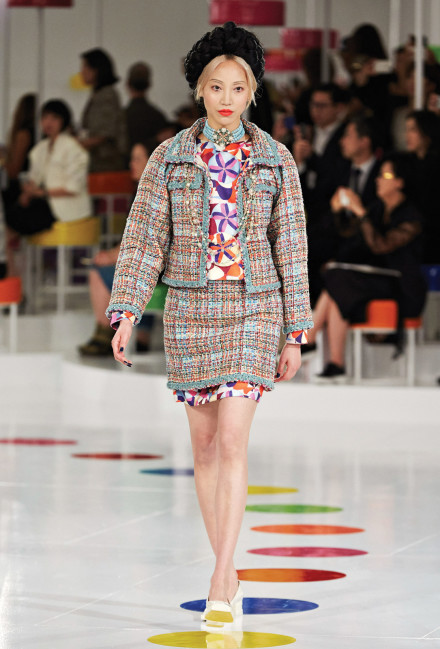The Asian Art Museum’s Couture Korea exhibition is a history lesson through fashion. Traditional culture is still relevant in modern Korea, and the traditional styles weave the past into the present’s contemporary designs. The plot twists in these centuries-old stories are told in changing clothing trends. The title of the exhibition, Couture Korea, borrows from the French to convey Korea’s elegant tradition of handcrafted tailoring.
Clothing, history, and art are tied together in three sections of the exhibition to carry the spirit of fashion as an ever-changing living link to the past and how it influences contemporary design. The first section, “What is Hanbok,” explains the most recognizable traditional garments of Korea consisting of a high, full skirt for women covering a longer tight-fitting blouse, and for men, a looser jeogori pants and outer robe. Different classes were, by law, required to wear certain colors and combinations of garments, materials, and even accessories.
The exhibition opens with an overview of the Confucian customs of dress in Joseon-dynasty Korea. Highlights include King Yeongjo’s outer robe, a delicate pre-1740 translucent silk robe bearing an inscribed prayer. Also shown is a modern woman’s winter ensemble reconstructed in wool, silk cotton, and linen after an 18th-century painting by Shin Yunbok (1758-after 1813) depicting a courtesan caught outside after curfew. A short jacket, tight sleeves, and voluminous skirt with exposed undergarments were cutting edge in their time. Festive clothing used in ceremonies and birthdays, bridal robes, and other celebratory events are embellished with embroidered symbols of happiness and prosperity, a colorful change from the upper classes’ more restrained styles.
“Between East and West” marks the second section of the exhibition and includes iconic looks from popular designers, including Jin Teok (b. 1934) and Karl Lagerfield (b. 1938). Mixing styles, like Teok’s repurposing of a Korean bridal robe as a long vest matched with a utilitarian jean skirt, subtly joins a celebratory event like a wedding with denim which suggests labor and pain. Lagerfield used mother-of-pearl lacquerware, wrapping cloths, and the Hanbok silhouette for his 2016 Chanel Cruise collection.
The final section, “From Seoul to San Francisco,” provides a glimpse into the streets, studios, and boutiques of contemporary Korean fashion. Young people reinterpret the Hanbok in a fashion-forward, personalized style with an emphasis on versatility and the understated chic of simple design. Signature looks of contemporary Korean designers Im Seonoc (b. 1962) and Jung Misun (b. 1984) reinforce the abiding appeal of tradition in present-day fashion.
This exhibition features over 120 works, ensembles as varied as the rich cultural history they represent, and will provide visitors with an understanding of how this cultural history has impacted Korean fashion.

Ensemble inspired by traditional Korean wrapping cloth (bojagi), from the Cruise collection, 2016, by Karl Lagerfeld for Chanel. Photograph © Chanel
Related events include the K-Fashion Bash on Nov. 29, a day-long celebration of Korean pop culture, from music to food to beauty, with a special panel of fashion designers discussing trends and inspirations. On Dec. 9, textile historian Lee Talbot and Korean dress historian Minjee Kim present an overview of 18th-century Korean fashion along with its current inspiration and appropriation in modern Korean and global fashion.
Couture Korea: Tue.–Sun., 10 a.m.–5 p.m., Nov.3–Feb. 4, 2018, $20, Asian Art Museum, 200 Larkin St., 415-581-3500, asianart.org





